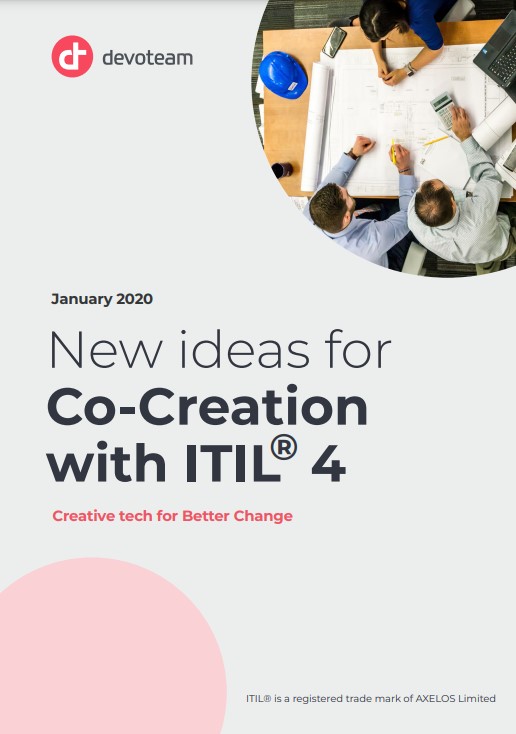As consumers, we always expect great service. We expect service experiences to relate to our problem, where we are based, how urgent the problem is and the kind of communication we prefer. At the same time, service consumers are becoming more diverse within the same company; over extensive geographical areas, bridging cultures, languages and social demographics. So, how do we design great service experiences for an internet service provider that works well for both grandchildren and grandparents alike? The answer is, of course, end-user involvement and co-creation.
For years we’ve been hearing that ITIL is not compliant with some modern methods such as DevOps, Agile, Design Thinking, and so on… This wasn’t true with ITIL v3 in the first place, but it’s even less so with ITIL 4, released in February 2019.
Value co-creation is integral to ITIL 4, reminding service management designers that value can be – and should be – harvested from a multitude of service interaction feedback loops. Looking at ITIL 4 implementations holistically, it is possible to use modern tools and methods to inspire a value co-creation way of thinking, when a service management tool is first implemented, by involving end-users in a controlled consumer-centric process.
In this e-book, we are presenting two real use cases to illustrate two methods for co-creation. First, implementing IT service management tools, design thinking in the initial innovative phases. Then implementing Rapid Method (Agile Method by Devoteam) for Process and ITSM Solution deployment, for fast, user-centric configuration. Two approaches that can be used together…or separately…
